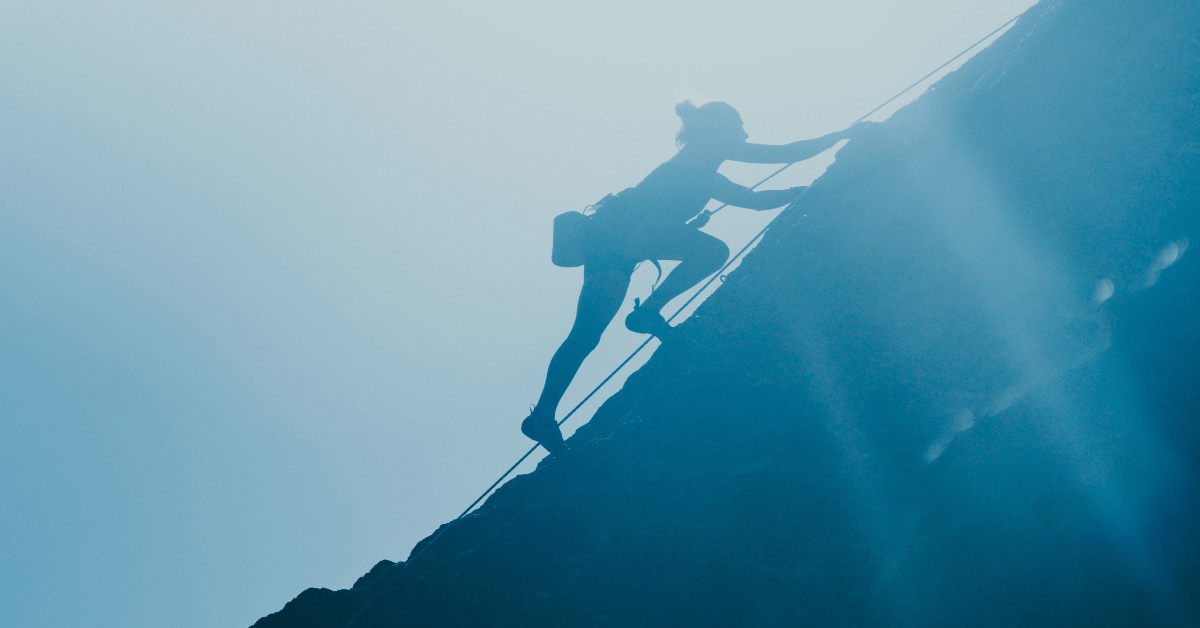Climbers are a unique group of individuals who push their physical and mental limits to reach new heights. Whether it’s scaling a rock face, summiting a mountain, or tackling a challenging ice climb, climbers are known for their determination, perseverance, and sense of adventure. In this article, we will explore what makes climbers so unique, delving into their mindset, motivations, and the physical and mental demands of the sport.
We will look at the various types of climbing, the communities and cultures that have formed around the sport, and how climbers push the boundaries of what is possible. Whether you are a seasoned climber or simply curious about the sport, this article will give you an inside look at the unique world of climbing and the people who make it their passion.
Without further ado, let’s skip to the FAQs and get started.
Why are climbers so weird?
Climbers are known for their unique mindset and the drive to push themselves to achieve the impossible. They are often considered “weird” by those who don’t share their passion for the sport, but this is because they possess a certain set of characteristics and a mindset that sets them apart from the general population. Climbers have a strong desire for adventure and a willingness to take risks, they are also extremely determined and persistent in achieving their goals.
They also have a strong sense of community and camaraderie with other climbers. These characteristics, along with the physical and mental demands of the sport, can make climbers appear “weird” to those who don’t understand or share their passion. Additionally, climbing is a niche hobby, and not everyone understands or appreciates it, which can make climbers seem peculiar to those who are not familiar with the sport.
Rock climbers are douchebags?
It is not true that all rock climbers are douchebags. Like any group of people, climbers come from all walks of life and have a wide range of personalities and attitudes. While there may be some climbers who exhibit douchebag-like behaviors, it is not accurate or fair to stereotype all climbers as such. Climbing is a demanding and challenging sport that requires a significant amount of skill, focus, and dedication.
Many climbers are passionate and committed individuals who push themselves to achieve their goals, both in climbing and in life. It’s important to remember that individuals should be judged on their own actions and not be generalized based on their involvement in a particular activity or group.
Why do climbers wear beanies?
Climbers wear beanies for a variety of reasons. The main reason is for warmth, as climbing in cold weather can cause the body to lose heat quickly. A beanie worn on the head can help to keep the body warm by trapping heat that would otherwise escape through the head. In addition to keeping the head warm, beanies can also protect the head from the sun and other elements, such as wind or rain. They also can help to keep hair out of the face while climbing.
Another reason is that beanies have become a sort of tradition and culture among climbers, and it has become a part of the climbing culture. Climbing beanies are often worn by climbers as a way to show their passion for the sport and to be part of the climbing community. They can also help climbers identify each other when they’re out on the routes, making it easier to find partners or help.
Are climbers good in bed?
Yes, we are!! Lol. Need I say more??
Why do climbers get hunchbacks?
Climbers may develop a hunchback, or a rounded upper back, due to the repetitive nature of climbing movements and poor posture. The constant reaching and pulling motions in climbing can lead to muscle imbalances and tightness in the chest and shoulders, which can cause the shoulders to round forward and the upper back to become rounded.
Additionally, climbers may also develop a hunchback due to poor posture while sitting or standing for long periods of time, as well as from carrying heavy climbing equipment. To avoid hunchback, climbers should focus on maintaining proper posture, stretching, and strengthening exercises for the upper back and shoulders.
What kind of people are climbers?

Climbers can come from all walks of life and have a variety of backgrounds, interests, and motivations. Some climbers are outdoor enthusiasts who enjoy the physical and mental challenges of climbing in nature. Others are drawn to the sport as a form of exercise or a way to push their physical and mental limits. Some climbers may also be drawn to the sense of community and camaraderie that often exists within the climbing community.
Climbers can range in age, gender, and experience level, with many starting the sport at a young age and continuing to climb well into their golden years. Climbers can be found at all levels of society, including professionals, students, and retired people. Some climbers may be highly competitive and focused on achieving specific climbing goals, while others may climb for leisure and relaxation.
Do girls like climbers?
I hope they do. Honestly, though, it’s difficult to make a generalization about whether or not girls like climbers, as people’s preferences for partners are highly individual and can’t be easily categorized. Some women may find climbers attractive because of their physical strength and athleticism, as well as their sense of adventure and willingness to take risks.
Other women may not be as interested in climbers and may prefer partners with different interests and hobbies. As with any group of people, there are many different types of climbers, with different personalities, interests, and lifestyles, and someone may find one climber attractive while another not. Ultimately, attraction is a complex and personal thing that depends on many factors, and it’s impossible to say whether or not “girls” in general like climbers.
Do climbers live longer?
There is limited research on the relationship between climbing and lifespan. Climbing, like any physical activity, has been linked to various health benefits such as increased cardiovascular and muscular endurance, improved balance and flexibility, and decreased risk of chronic diseases. These benefits can in turn contribute to a longer lifespan. But, it’s also important to note that climbing can be a high-risk activity and accidents can happen, which can shorten one’s lifespan.
Additionally, it is also important to consider other lifestyle factors such as diet, stress management, and overall health that can also influence longevity. Climbers who engage in regular physical activity and have a healthy lifestyle may be more likely to live longer than those who don’t. But again, it’s hard to make a generalization, and other factors such as genetics, environmental exposures, and access to healthcare also play a significant role in determining one’s lifespan.
Why are climbers not muscular?
Climbers typically have a lean and athletic build, rather than a heavily muscled one, because the sport primarily relies on endurance and technique rather than raw strength. Climbing requires a combination of strength, flexibility, balance, and coordination, and having too much muscle mass can actually be detrimental to performance by adding extra weight and reducing mobility.
Additionally, climbers need to conserve energy, so they will not build muscle mass which is not needed for climbing.
Do climbers’ hands get bigger?
Climbers may develop larger hands as a result of regularly gripping and holding onto small holds and edges on rock faces or artificial climbing walls. Over time, this can lead to an increase in the size and strength of the muscles and tendons in the hands and forearms. However, it is worth noting that this change may not be significant or visible to the naked eye and will vary greatly depending on the individual.
Additionally, climbers may also develop calluses on their hands which can make their hands look larger and harder than they actually are. These calluses are the body’s natural way of protecting the skin from the friction and pressure of gripping and pulling on small holds.
Are humans naturally good at climbing?
Humans are not inherently built for climbing in the same way that other animals, such as apes and monkeys, are. However, humans have evolved to be bipedal and have developed upper body strength, dexterity, and coordination over time which allows us to climb.
Climbing is a skill that can be developed and improved with practice and training. Some people may have a natural inclination towards climbing, but it is not a skill that is innate to all humans. With proper training and technique, most people can become competent climbers, regardless of their natural abilities.
It is also worth noting that there are different types of climbing, and different people may excel at different types. For example, a person who is naturally agile and flexible may excel at sport climbing, while someone who is naturally strong and determined may excel at trad climbing.
At what age do climbers peak?
The age at which climbers peak can vary greatly depending on the individual and the type of climbing they are pursuing. Some climbers may peak in their late teens or early twenties, while others may continue to improve well into their thirties or even forties.
In general, it is believed that climbers reach their physical peak in their late twenties to early thirties, when they have developed a combination of strength, endurance, and technique. However, this is not always the case and some climbers may reach their physical peak at an earlier or later age.
Experience, training and good climbing techniques can make up for peak physical strength and allow climbers to continue to improve even when they are no longer at their physical peak. Additionally, some of the most successful and accomplished climbers continue to climb and compete at a high level well into their 40s and 50s.
It is important to note that climbing is a complex sport that relies on a combination of physical, mental, and technical skills and that each individual has their own specific peak time and decline rate.
Where do rock climbers poop?
Rock climbers typically use portable toilets or “wag bags” when climbing in outdoor areas where there are no restroom facilities nearby. A wag bag is a small, sealable bag that contains a chemical powder that helps to break down and neutralize human waste. Once the waste is contained in the bag, it can be carried back down to the trailhead and disposed of in an appropriate manner.
When climbing on a multi-pitch route, climbers will often carry their own wag bags and bury their waste in a “cathole” that is at least 6-8 inches deep and at least 200 feet away from water sources, trails, and campsites. Climbers are expected to follow Leave No Trace principles and take responsibility for their waste.
In indoor climbing gyms, climbers usually use restroom facilities provided by the gym.
It’s important to note that these are the general guidelines and practices, and it’s always best to check with the specific climbing area or gym for their policies and regulations.
Why you should date a rock climber?

There are many reasons why someone might enjoy dating a rock climber.
- Rock climbers are physically fit and active, which can be attractive to those who also value physical fitness and an active lifestyle.
- Rock climbers are adventurous and enjoy pushing themselves to new limits, which can make for exciting and memorable experiences together.
- Rock climbers are often passionate about the sport and can be very dedicated, which can be inspiring and motivating for their partner.
- Rock climbers are problem-solvers, they are used to thinking creatively and strategically to solve problems and overcome obstacles, this can translate to other aspects of life and make them great partners in problem-solving.
- Rock climbers are also known to be independent, self-reliant, and responsible, which can be attractive traits in a partner.
- Climbing can be a great way to bond and share experiences together, whether it’s climbing at the gym or going on outdoor climbing trips.
It is important to note that like any other person, a rock climber can have good and bad traits, it’s important to look at the person as a whole and not just their hobby.
Related: The Importance of Knot Tying in Climbing
Does climbing get you ripped?
Climbing can be a great way to build strength and muscle tone, but it may not necessarily lead to a “ripped” or heavily muscled physique. It primarily relies on endurance and technique and having too much muscle mass can actually be detrimental to performance by adding extra weight and reducing mobility.
What’s more? Climbing works out multiple muscle groups in the body including the arms, shoulders, back, core, and legs. It can also improve cardiovascular fitness and burn calories. With consistent climbing and proper training, climbers can expect to see improvements in muscle definition and tone, but the degree of muscle development will depend on an individual’s starting point, genetics, and training regimen.
It’s worth noting that climbing is not a traditional body-building sport and that different people have different body types, goals, and preferences. Some climbers may prioritize strength and muscle development, while others may prioritize endurance, flexibility, and mobility.
If getting “ripped” is your main goal, it’s important to remember that climbing alone may not be enough to achieve that. It’s important to also have a well-rounded fitness program that includes weight training, cardio, and proper nutrition.
Is climbing better than gym?
Climbing and going to the gym are both great ways to stay active and improve fitness, but they each have their own unique benefits and drawbacks.
Climbing is a full-body workout that requires strength, endurance, and technique. It also provides a unique mental challenge as climbers must problem-solve and strategize to overcome difficult routes. Climbing outdoors in nature can also be a great way to escape the monotony of the gym and get some fresh air.
Gym workouts, on the other hand, typically provide more variety in equipment and exercises and can be more easily tailored to specific fitness goals. Gyms also usually have a wider range of cardio equipment and weights, which can be beneficial for those looking to increase muscle mass or improve cardiovascular fitness.
Both climbing and going to the gym have their own unique benefits, it’s important to consider your own goals, preferences, and what you enjoy doing to decide which one is better for you. Many climbers incorporate gym training into their climbing routine, either to improve their specific climbing muscle strength or to complement their climbing routine with other types of exercises.
Ultimately, the best way to stay active and improve fitness is to find an activity or combination of activities that you enjoy and stick with it.
Are Taller people better at climbing?
Taller people may have an advantage in certain types of climbing, such as traditional climbing or big wall climbing, where reaching high holds and placing gear can be easier for those with longer arms. However, taller people may also have a disadvantage in other types of climbing, such as sport climbing or bouldering, where shorter climbers may be able to reach holds that taller climbers cannot.
In general, climbing success is not solely determined by height, but by a combination of physical attributes, technical skills, and mental focus. Climbing is a sport that requires a combination of strength, endurance, flexibility, balance, and coordination, and these abilities can be developed and improved with practice and training regardless of height.
Additionally, climbers use a variety of techniques and strategies to compensate for any height-related disadvantages they may have. For example, shorter climbers may use more advanced footwork techniques to reach holds that taller climbers can’t.
It’s worth noting that taller people may have to work harder to maintain a good body position and balance, and shorter people may have to work harder to reach holds. But, with proper training and technique, both shorter and taller climbers can excel in the sport.
Why do climbers sand their fingers?
Climbers may sand their fingers to create calluses, which are thickened areas of skin that develop as a result of repeated friction and pressure. Calluses can help protect the skin on the fingers from tearing or blistering, which can occur when gripping and pulling on small holds and edges.
Some climbers will use a fine-grit sandpaper or a pumice stone to file down the skin on their fingers, creating a thicker, more durable layer of skin that can better withstand the demands of climbing. This process is usually done after climbing sessions, when the skin on the fingers is still warm and pliable, to avoid over-sanding and causing damage to the skin.
It’s worth noting that not all climbers sand their fingers, and some climbers may find that their fingers develop calluses naturally without the need for sanding. Also be careful not to overdo it and to keep the skin moisturized, as overly dry and rough skin can be more prone to tearing or injury.
It’s always best to consult with a dermatologist before sanding your fingers, to ensure that you are doing it safely and in a way that will not cause harm to your skin.
